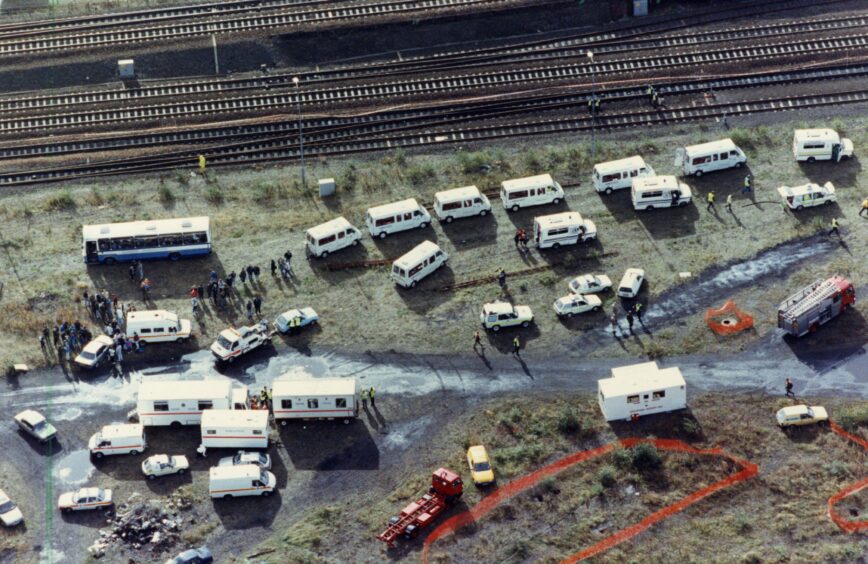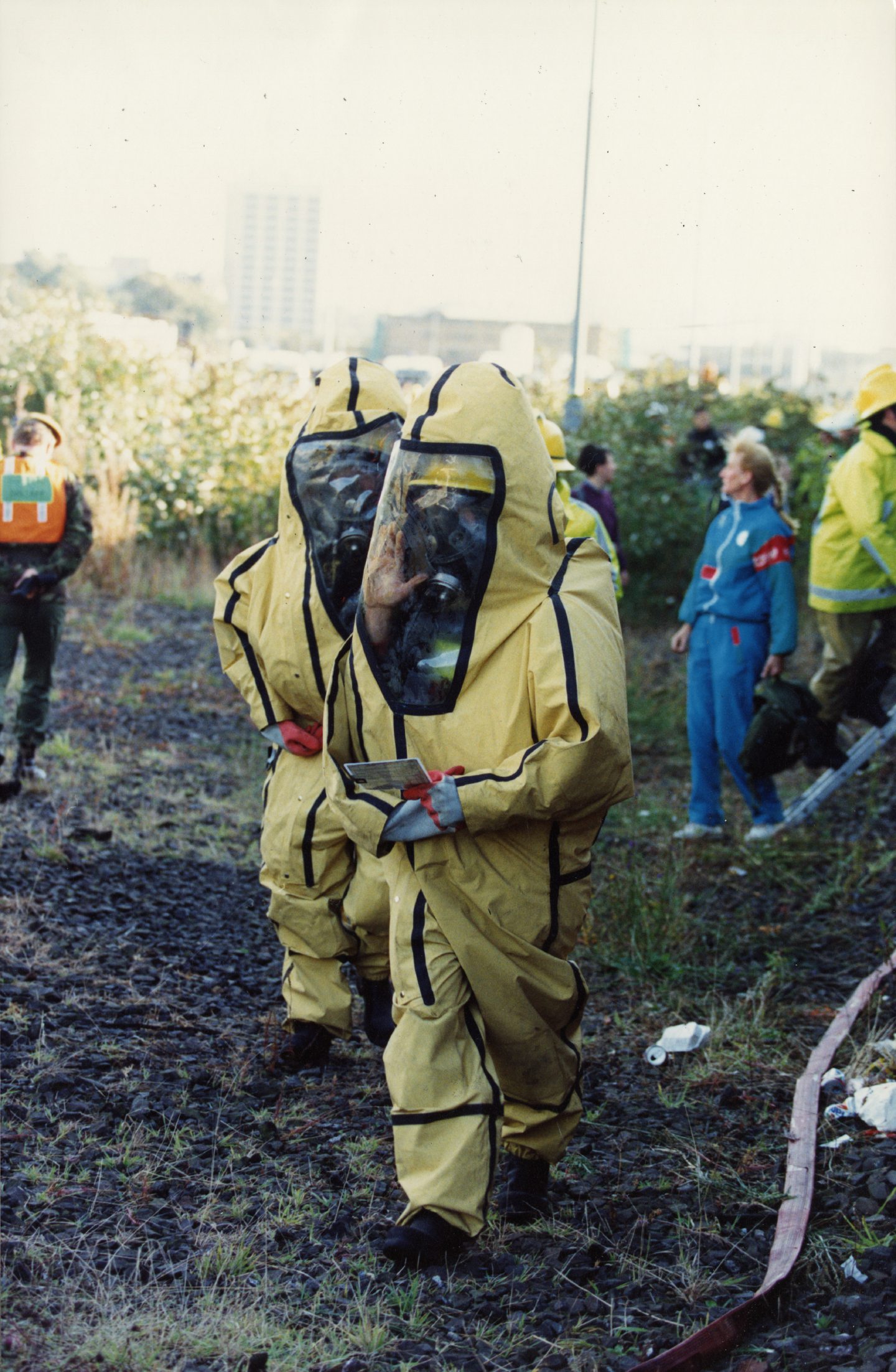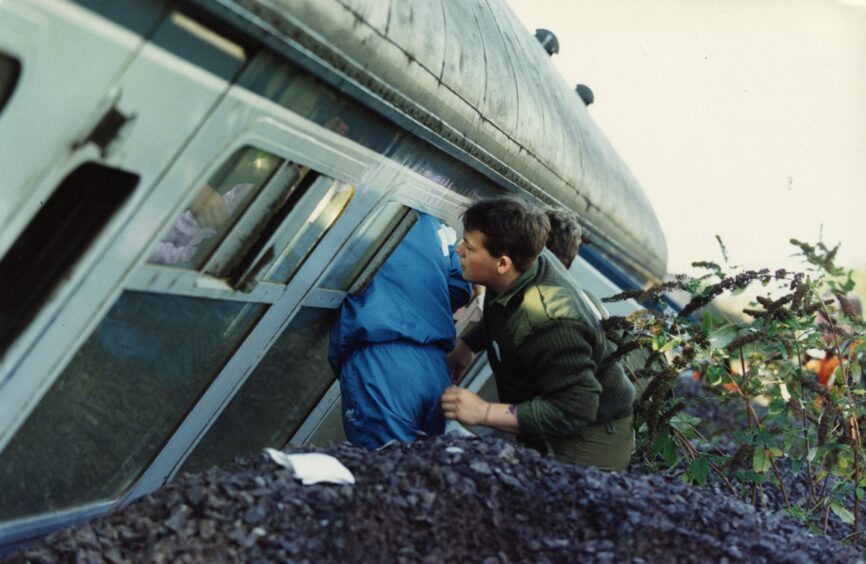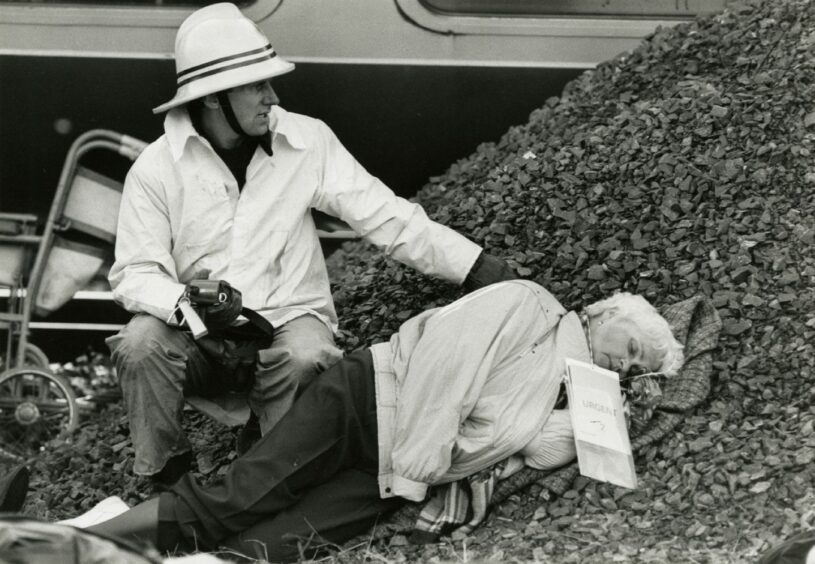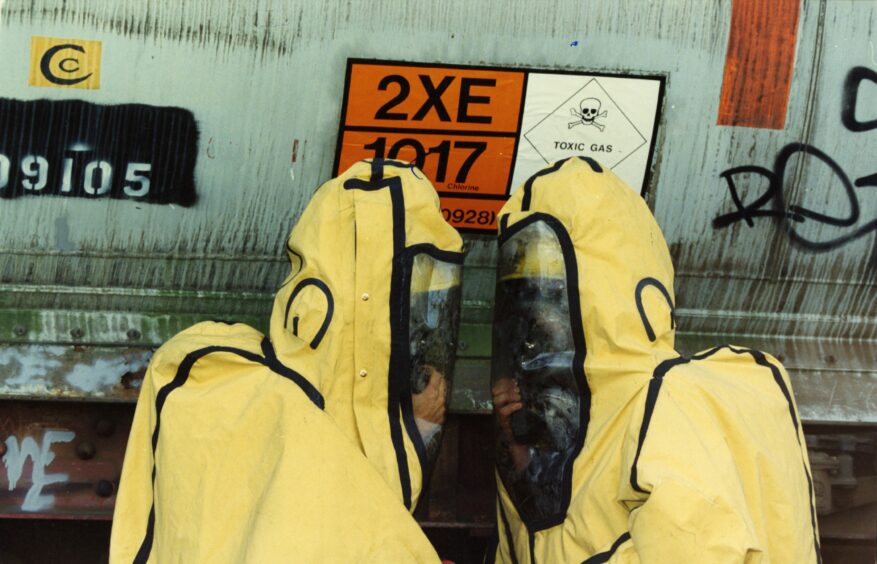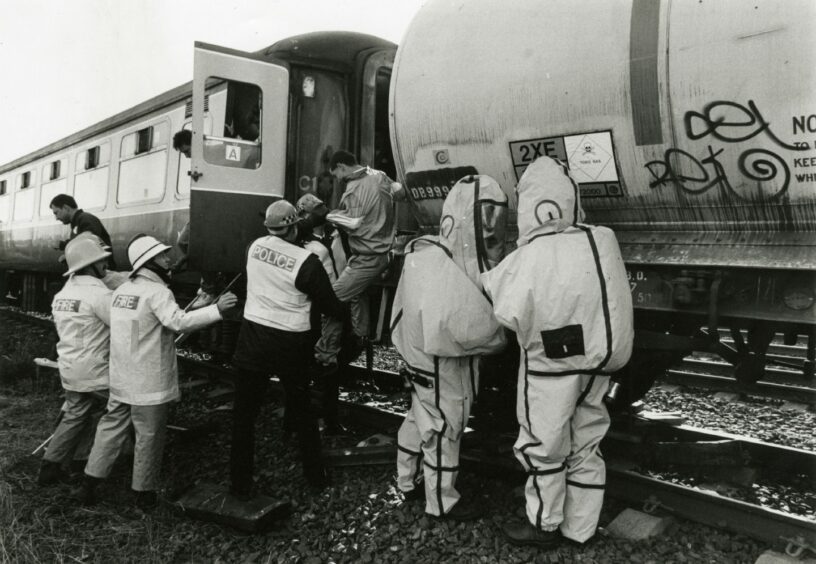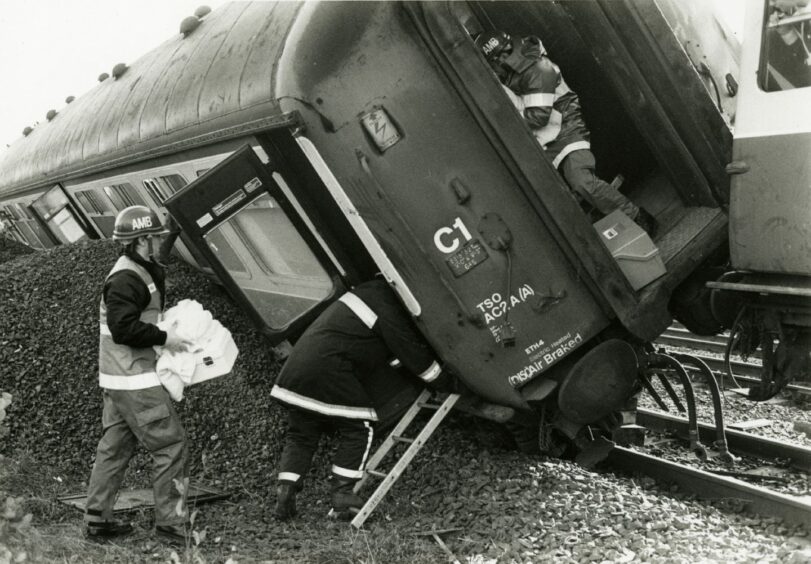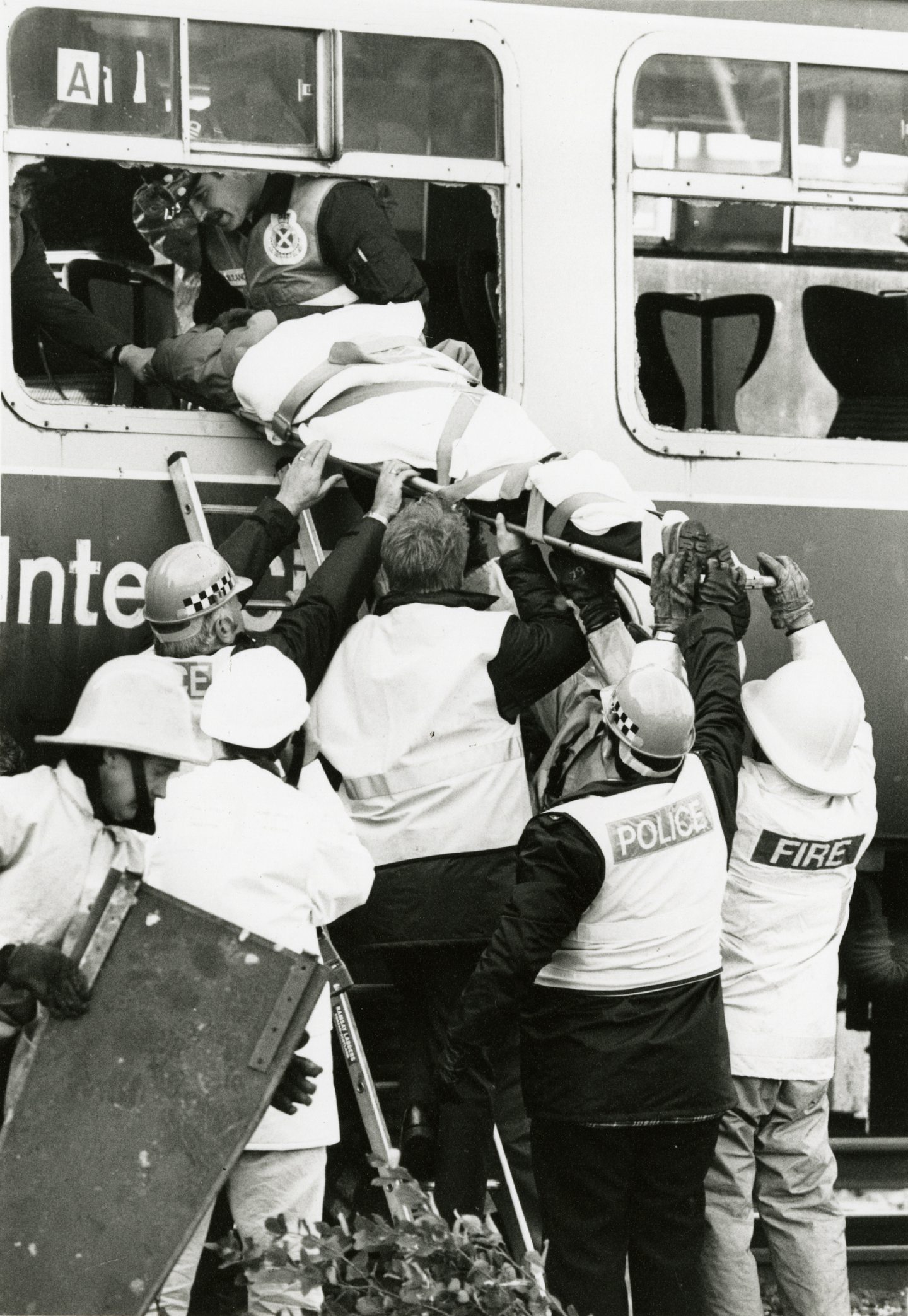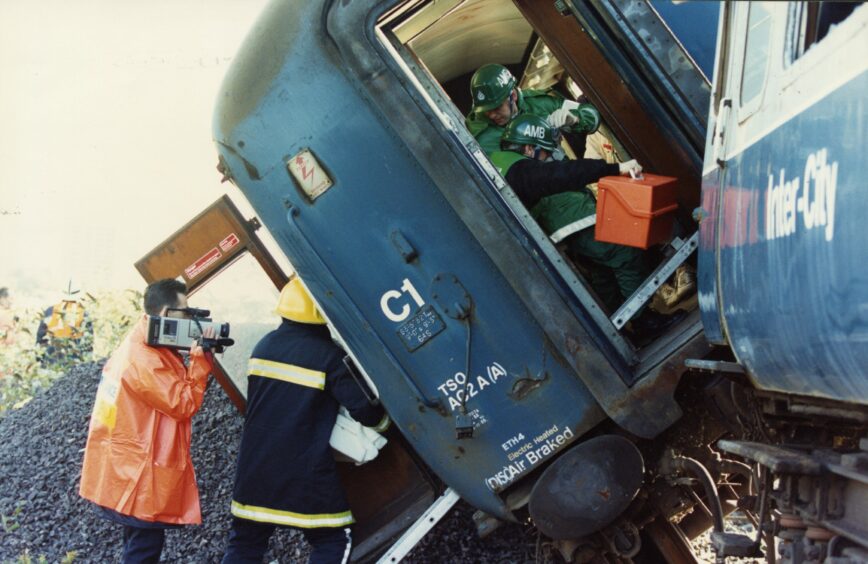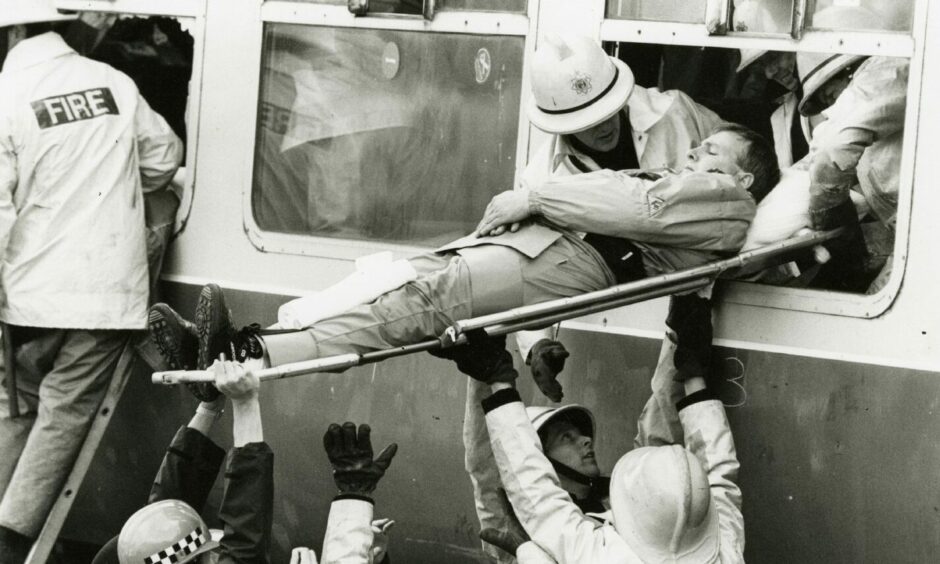
A full-scale emergency response was scrambled following a rail crash between a five-coach InterCity 125 and a tanker carrying toxic chemicals in Dundee.
But it was all part of an elaborate training drill in September 1991.
Blue Iris was the first large-scale civil emergency exercise to be carried out in Tayside since town and village were lumped together under regionalisation in 1975.
Onlookers could have been forgiven for thinking a genuine disaster had just occurred as the emergency services rushed to the assistance of about 200 trapped passengers.
The simulated rail crash between a southbound high-speed passenger train and chemical-carrying tanker was staged at the northern approach to the Tay Rail Bridge.
A ScotRail carriage was derailed to add realism.
It worked.
The exercise brought together all three emergency services and the notional fuel spill in the estuary at Invergowrie Bay meant full protective clothing being worn.
An Army helicopter circled above.
The simulated crash resulted in 10 fatalities — which were all dummies.
There were 30 seriously injured and a further 20 passengers requiring treatment, and these roles were played by Territorial Army and St Andrews Ambulance volunteers.
Part of the exercise involved the simulated evacuation of 160 nearby residents whose homes were affected by toxic fumes from the rail tanker involved in the accident.
All volunteers involved in the exercise were asked to carry out their roles with as much realism as possible, which brought harrowing cries for help from the damaged train.
More than 400 people from 20 organisations took part — including the Tay River Purification Board, which was brought in because of the “fuel oil spill in the estuary”.
To minimise disruption to the daily routine of the emergency and hospital services, the main operation of the exercise was limited to the morning and went “without a hitch”.
Did anyone phone 999 for real after witnessing the train wreck?
A spokesman for Tayside Regional Council said the public had reacted well to Blue Iris with pre-publicity ensuring that nobody confused the exercise for the real thing.
Dundee was already no stranger to rail derailments.
The 1879 Tay Bridge Disaster was followed 100 years later by the Invergowrie Rail Disaster, which involved a massive rescue operation and left five people dead.
The 1979 accident had a profound and lasting effect on the local community.
Calamity struck on October 22 1979 when the Aberdeen-bound express from Glasgow slammed into the rear of a broken-down train just after 11am.
Such was the force of impact the engine burst into flames and threw four coaches from the stricken train – the 08.44 passenger service from Glasgow Queen Street to Dundee – over the sea wall.
The last two broke away completely and ended up in the River Tay.
The accident also left 51 people injured including Dundee United footballer Doug Wilkie, who was left wheelchair-bound at the age of 23.
So how was the 1991 operation received?
Tom Brydon, Tayside’s depute emergency planning officer, said the success of Blue Iris was a result of “a number of important elements falling into place”.
“For instance, we have had nothing but massive support from ScotRail, who generously offered an exercise site and rolling stock for Blue Iris,” he said.
“They are very much playing this for real.
“But it is important to point out that Tayside hasn’t been without emergency planning since 1975 — far from it.
“All the emergency services — fire, police, ambulance and the health service — are continually running exercises of their own.
“And even while the uniformed emergency organisations are participating in Blue Iris, their frontline service to the public will be maintained.
“The difference is that Blue Iris is a major civil emergency exercise.
“There has been nothing of this scale since 1975 and we have previously never involved all local authority departments.
“There is no legislation for authorities to plan for peacetime emergencies.
“We are not testing people —this exercise is part of a learning curve.
“Blue Iris forms part of a gradual training cycle, which, in the past, has included events like the major air crash seminar staged two years ago.
“The concept is the same, the scenario is different.”
He said the advance preparation for Blue Iris was “relatively free from major problems” with every person taking part being given a “script” detailing what they had to do.
“It is certainly not playing games for us,” he said.
“In a real emergency everyone has the same aim — to provide a service.
“After the Lockerbie disaster, for instance, the local WRVS provided hundreds of meals every day, for weeks.
“An important lesson from Lockerbie was that we should never underestimate the resilience of the population — we have to be prepared.
“We hope that people in Dundee and Tayside will appreciate that Blue Iris is taking place — and is necessary — to enable us to become better prepared for any peacetime eventuality.”
- These images from the Blue Iris emergency exercise appear courtesy of The Dundonian, which appears in the Evening Telegraph every Wednesday.
